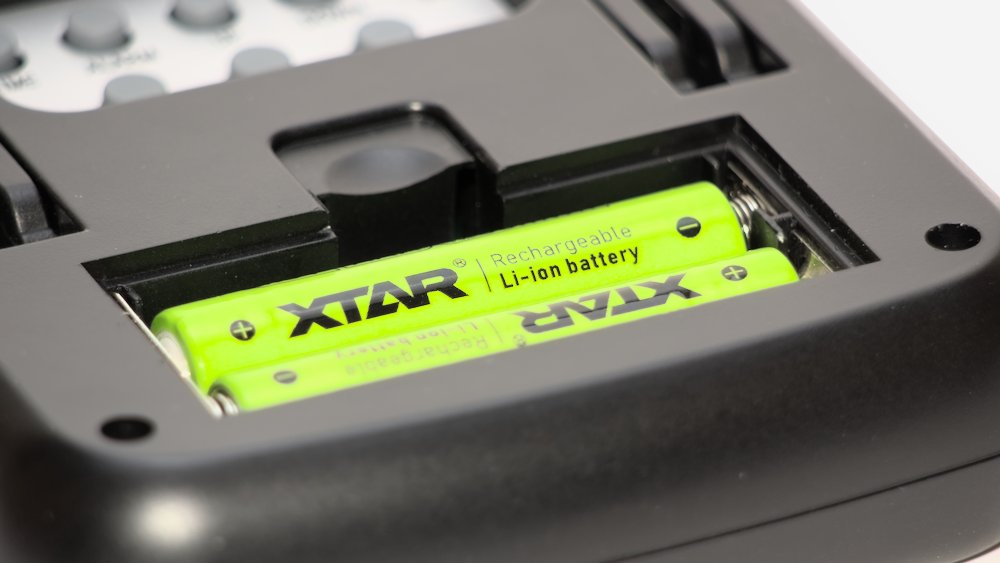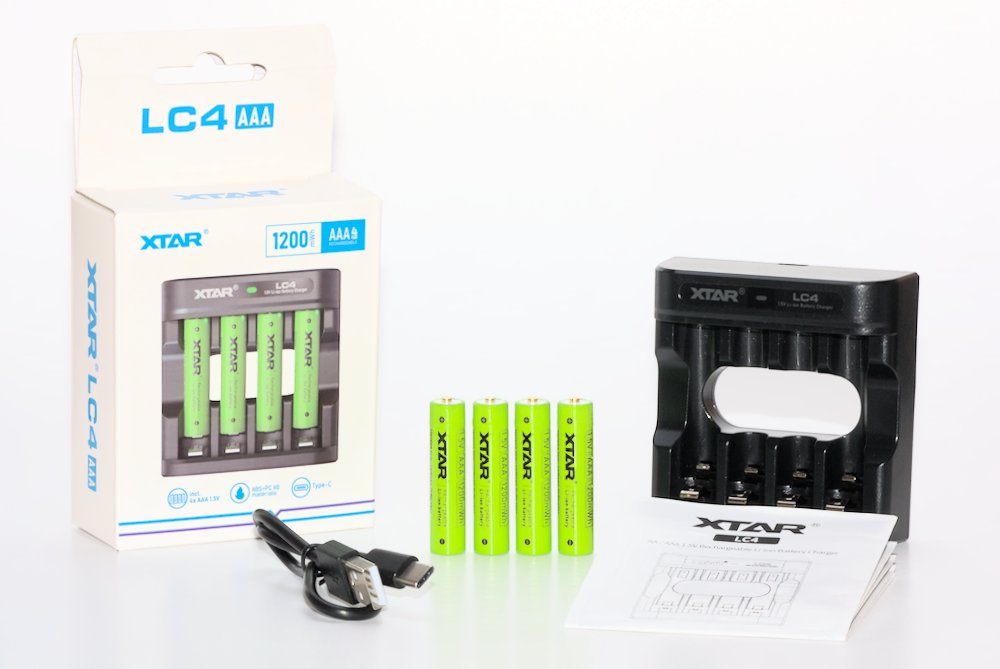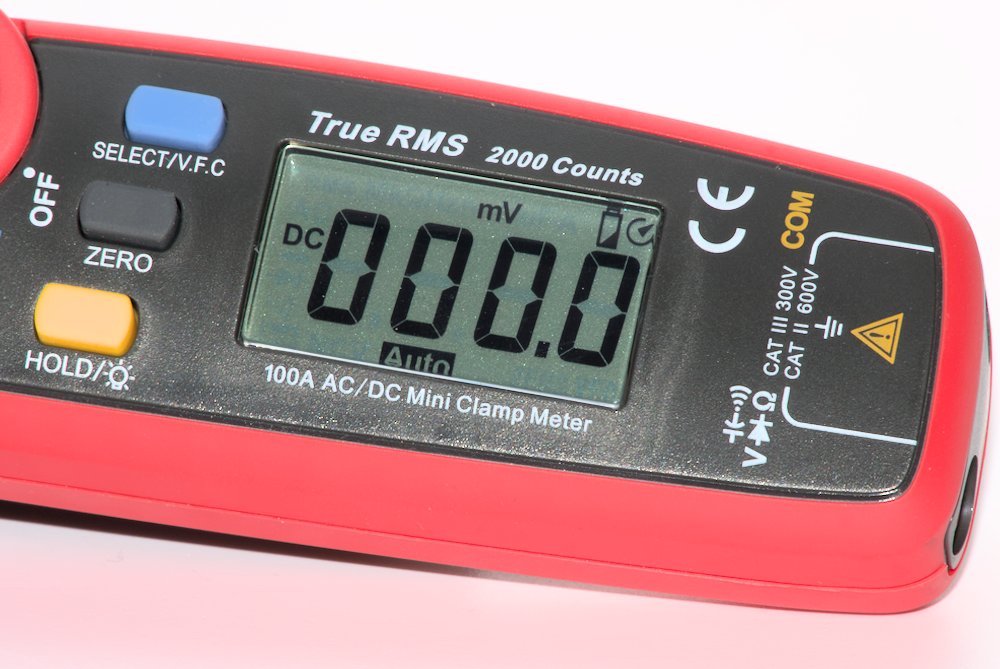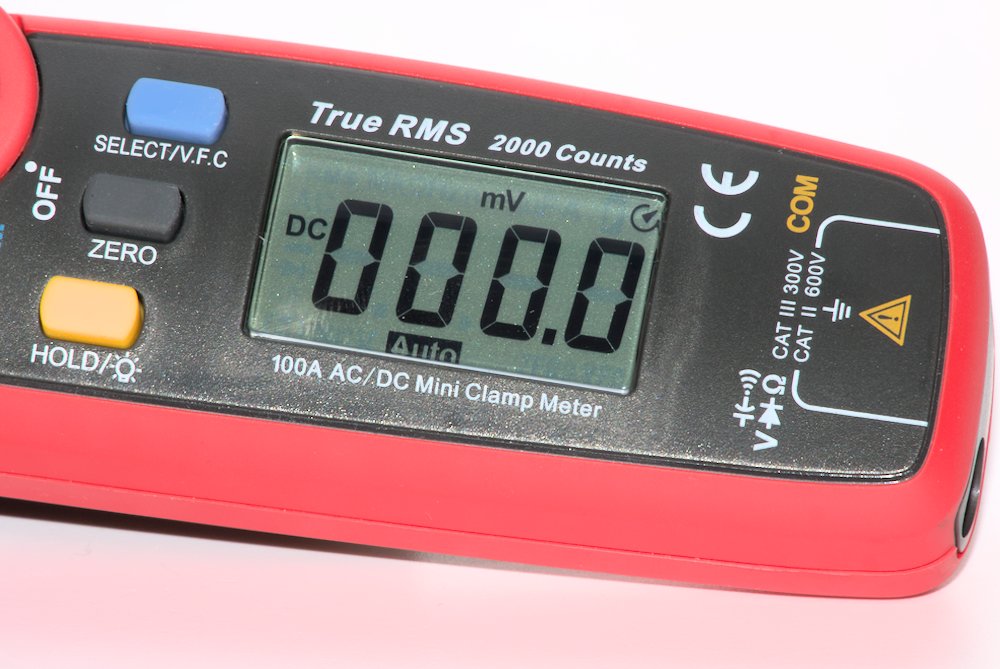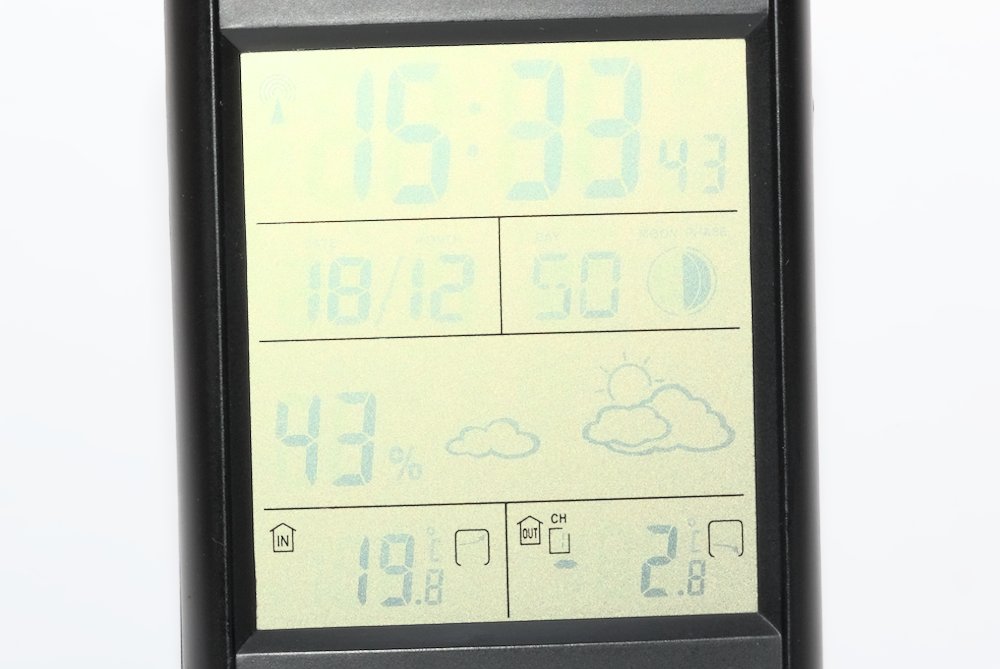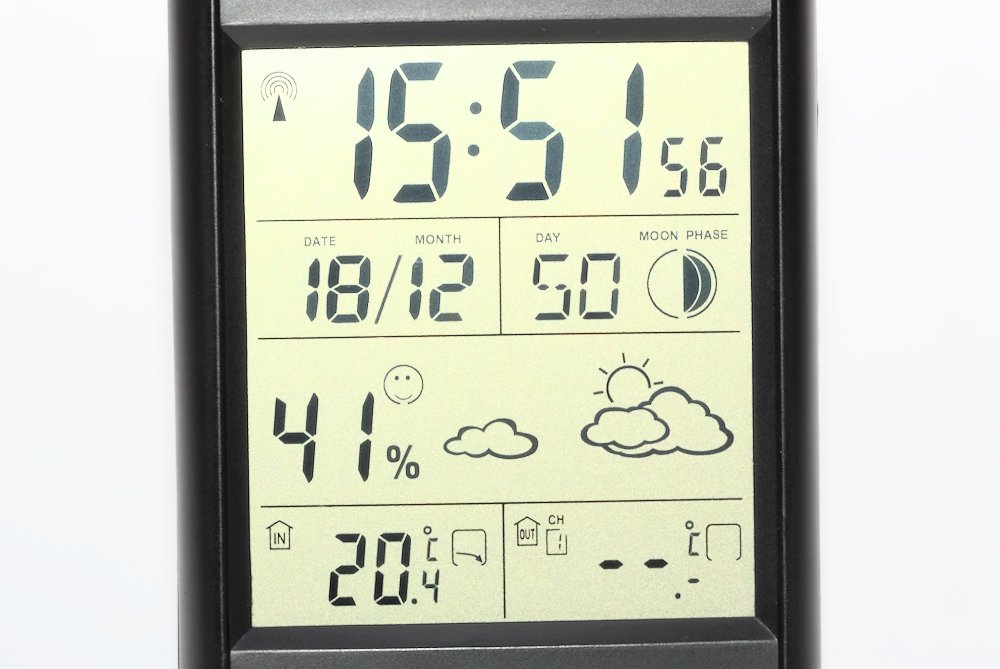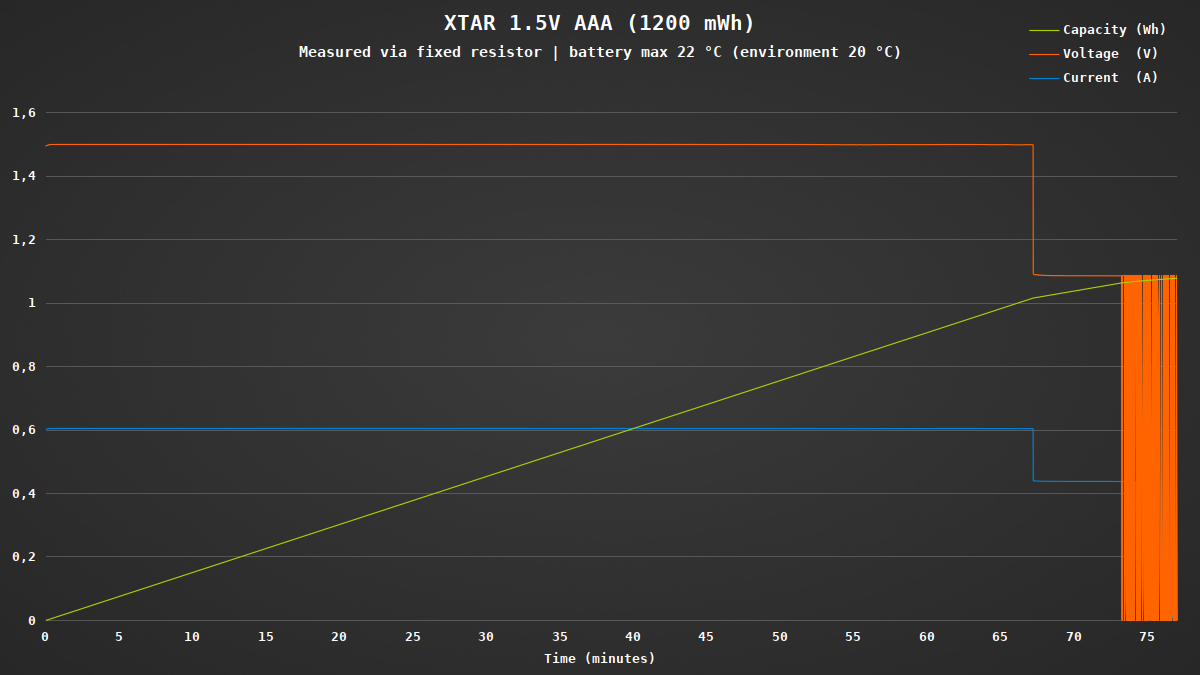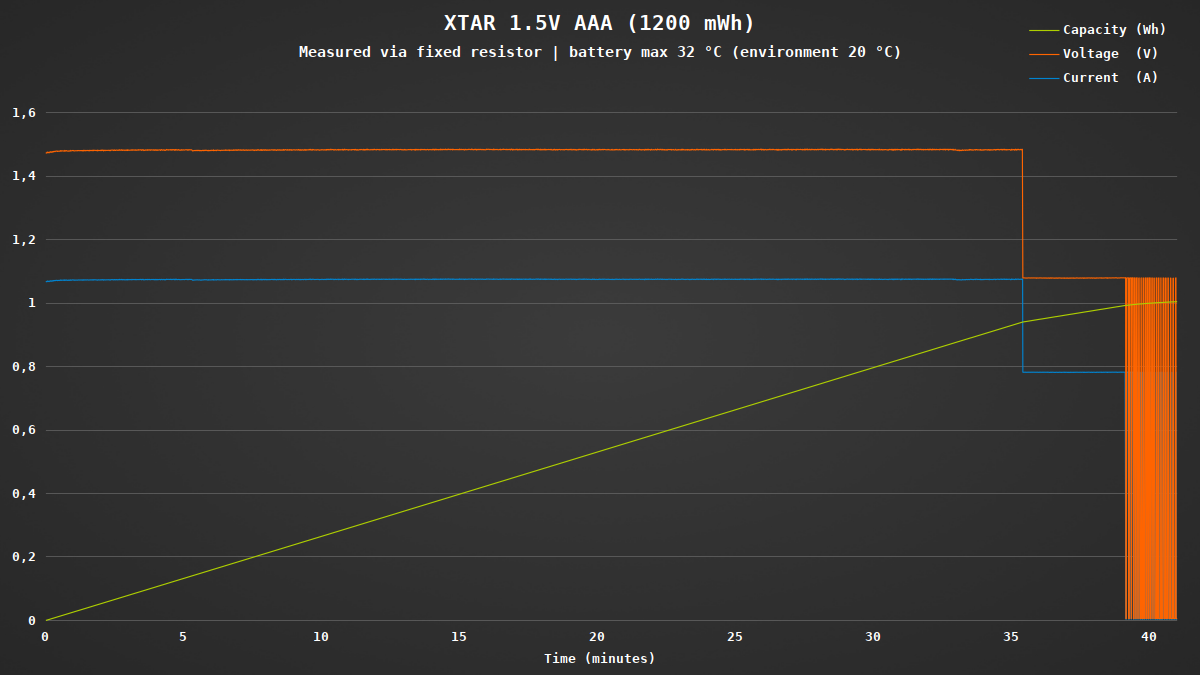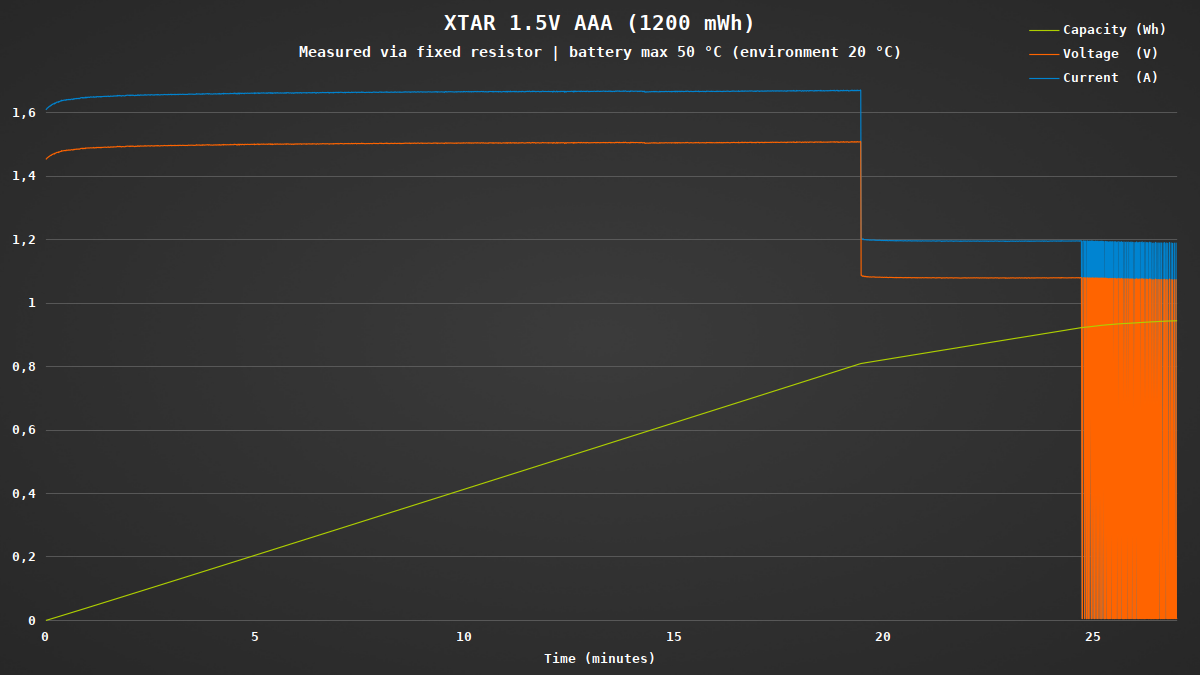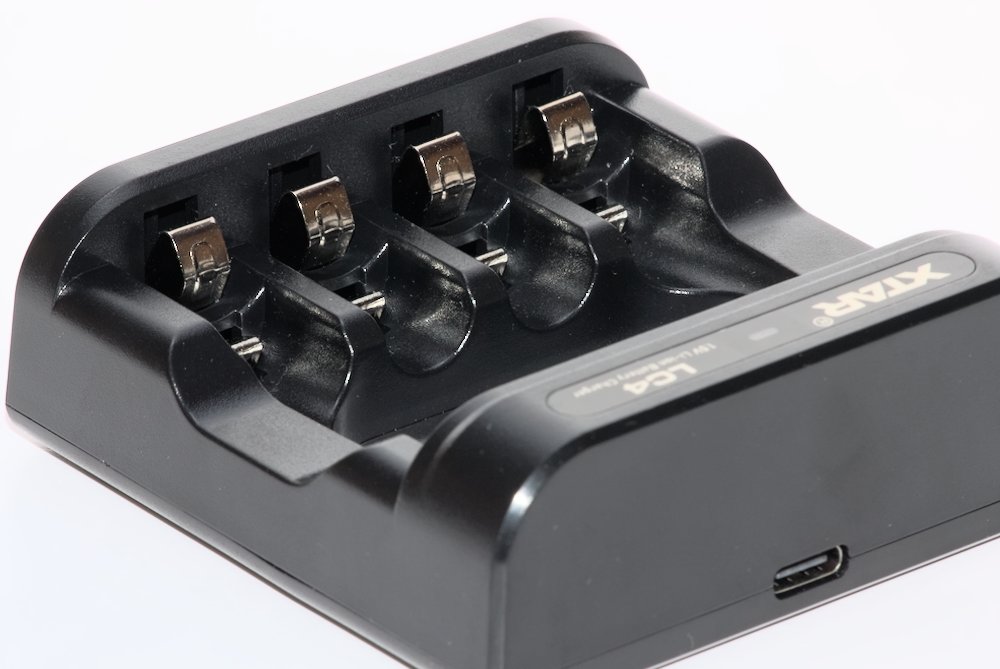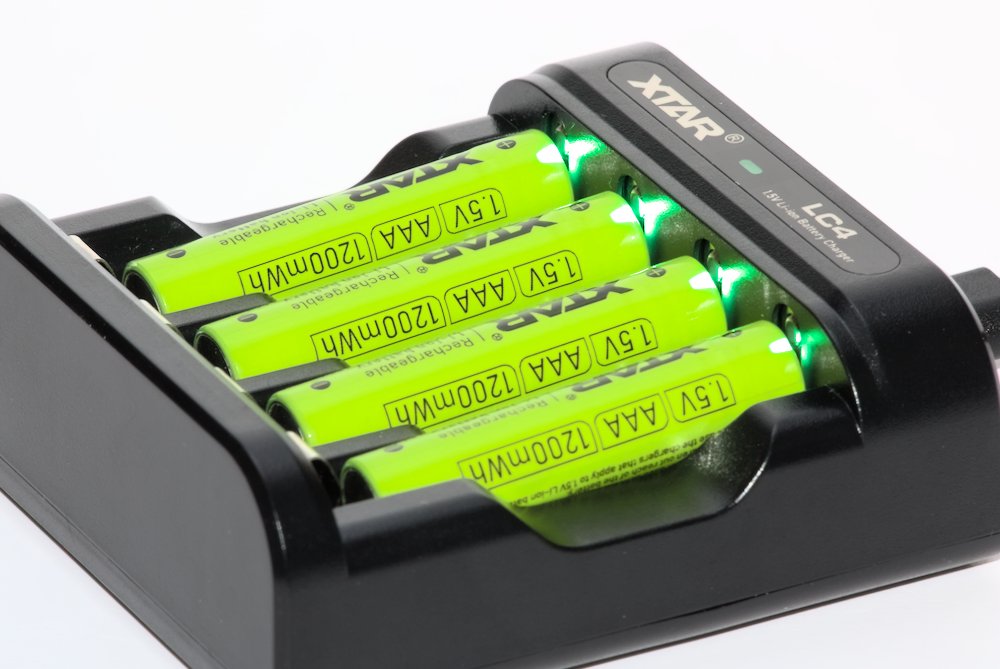Alkaline batteries easily leak unexpectedly and are bad for the environment. NiMH batteries (preferably the LSD variants) are better in almost all aspects: Rechargeable hundreds or thousands of times, higher current and they don’t leak. But the downside is that their voltage is more around 1.2V instead of 1.5V. This causes some devices to show an early battery warning or to not work at all.
Li-ion based 1.5V batteries try to fill this gap: They are rechargeable Li-ion cells with an integrated step-down converter to provide constant 1.5V over the full capacity of the battery.
XTAR has sent me a set of their new 1.5V AAA batteries for a review.
This review is also available in German on my website: SammysHP Blog › XTAR 1,5 V Akkus
Overview
The set contains four 1.5V AAA batteries, a “charger”, a USB-C cable and a “manual”. The batteries were rattling in the box when they arrived.
The “manual” includes ten languages (EN, DE, FR, IT, ES, GR, TR, RU, CN, PL), but not much content. If you skip all parts about warranty and where to find the USB-C port, it is basically: Plug in the USB cable, put in the batteries and they will charge.
The batteries
They look like regular AAA batteries: flat negative pole, button-top positive pole. Hidden at the positive side is the step-down converter providing constant 1.5V from the 2.8–4.2V of the Li-ion battery. It also includes the charging circuit and a green status LED.
As an example I tested the XTAR batteries in my UNI-T UT210E clamp meter. While it works with NiMH batteries, it will show a battery warning even with almost full NiMH batteries. Because the XTAR batteries deliver 1.5V all the time, the battery indicator will not be shown. Great.
But you still get a battery warning for the XTAR batteries at the end. How is that possible? When the batteries are almost empty, the voltage will jump from 1.5V to 1.08V – what a great addition!
Another device I used for testing is a radio clock with external temperature sensors. At about 1.3V the display starts to fade, at 1.2V it is almost unreadable. And that’s the normal voltage of NiMH batteries. With the XTAR batteries the contrast is always perfect. At the end of discharge the display would be unreadable, but the alarm would still work.
But there is a problem: The clock signal is only received when I bring the clock outside and the temperature sensors are not received at all! There must be some kind of interference with the batteries.
When checking the noise of the voltage with an oscilloscope at different loads it becomes obvious. I guess there was not enough room for proper filtering, but this limits the use of the batteries. It is likely they will cause trouble when used in something that receives radio signals.
I tested the discharge at currents ranging from 600mA to 1600mA. Even at the highest load they provide 1.5V, but they will also heat up significantly. My test was open on the bench, so it will become a much bigger problem enclosed in devices.
The claimed capacity of 1.2Wh is mostly achieved, depending of the discharge rate. When the battery is empty, the voltage will slowly toggle between 0V and 1.08V and the indicator LED is blinking.
I was not able to measure the self discharge in the short time. Unfortunately XTAR doesn’t provide that information either.
The charger
You cannot charge the XTAR 1.5V batteries in a normal charger. You have to use the official XTAR LC4 “charger” – more or less just an adapter from USB to the battery terminals.
All positive and negative contacts are connected in parallel and are at 5V. There is a USB-C port at the back of the device.
The actual charging circuit is integrated in the batteries themselves. It charges the battery at 250mA in about 1:15h. During charging the status LED blinks green, which gets annoying when you charge all four batteries at the same time. Better place the charger not in direct sight.
A hole in the underside of the charger allows for an easy removal of the batteries. Its construction is solid and well made. I was not able to open it because it is either welded or clipped together.
Conclusion
The XTAR 1.5V batteries fill a gap between Alkaline, NiMH and Li-ion batteries. They are a good solution when you want to use rechargeable batteries in a device that has trouble with the lower voltage of NiMH batteries.
But you have to be careful if the device is compatible with the noisy voltage of the XTAR batteries. It is likely they will cause trouble when used in something that receives radio signals.
